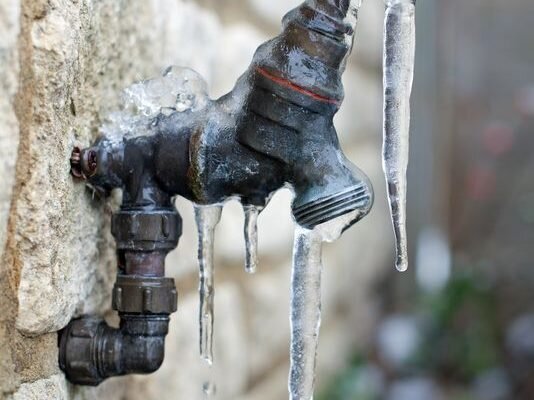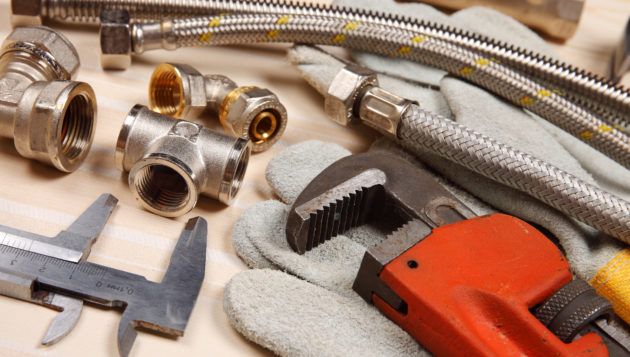Helpful Methods to Guard Your Plumbing and Shield Against Freezing in Frigid Conditions
Helpful Methods to Guard Your Plumbing and Shield Against Freezing in Frigid Conditions
Blog Article
Do you find yourself hunting for help and advice about Winterizing Your Pipes?

All homeowners who live in warm climates have to do their finest to winterize their pipelines. It is something you need to do throughout autumn before deep wintertime really starts. Failure to do so can lead to catastrophe like frozen, fractured, or ruptured pipes. If the weather condition outside is frightful, below are some handy winterizing hacks to keep your plumbing system shielded even.
Attempt a Hair Clothes Dryer or Warmth Weapon
When your pipes are virtually freezing, your trusty hair clothes dryer or warm weapon is a blessing. If the hot towels do not help dislodge any working out ice in your pipes, bowling warm air straight right into them may help. You may finish up destructive your pipelines while trying to melt the ice.
Open Cabinet Doors Hiding Plumbing
It would certainly be handy to open up cabinet doors that are masking your pipelines when it's chilly outside. They could be someplace in your kitchen area or restroom. This will permit the warm air from your heater to circulate there. Therefore, you prevent these subjected pipes from cold. Doing this tiny technique can keep your pipelines cozy as well as limit the possibly harmful outcomes of freezing temperature levels.
Take Time to Wrap Exposed Pipeline
One clever as well as easy hack to heat up freezing pipes is to wrap them with cozy towels. You can additionally use pre-soaked towels in warm water, simply don't neglect to wear protective handwear covers to protect your hands from the heat.
Turn On the Faucets
When the temperature declines and also it seems as if the cold temperature level will certainly last, it will help to turn on your water both inside and also outdoors. This will certainly maintain the water flowing via your plumbing systems. You'll finish up throwing away gallons of water this method.
Shut Off Water When Pipes are Frozen
Shut off the primary water shutoff right away if you discover that your pipes are totally frozen or practically nearing that stage. You will typically find this in your basement or laundry room near the heater or the front wall surface closest to the street. Turn it off right away to prevent further damage.
With more water, even more ice will pile up, which will at some point lead to burst pipes. If you are uncertain concerning the state of your pipes this winter months, it is best to call a professional plumber for an examination.
All house owners that live in temperate climates need to do their finest to winterize their pipes. Failing to do so can mean disaster like icy, cracked, or ruptured pipelines. If the hot towels do not help remove any resolving ice in your pipes, bowling warm air directly into them may assist. Turn off the major water shutoff instantly if you see that your pipes are entirely frozen or nearly nearing that phase. With more water, even more ice will certainly stack up, which will at some point lead to burst pipelines.
PREVENT YOUR PIPES FROM FREEZING THIS WINTER
A Leading Cause of Property Damage
When the weather is taking a deep nose dive into the cold dreary days, the risk of your pipes freezing and potentially bursting skyrockets. Unfortunately, during these cold dreary months, burst pipes are the most common denominator for property damage. The pipes that are most at the risk are those that are in areas where it is most cold in your home. For instance, pipes located in interior places such as basements, attics, and your garage. Unfortunately, that doesn’t mean that the pipes running through your cabinets or exterior walls can’t freeze. Good news, however, is that you can do things to help prevent pipes from freezing.
How to Prevent Pipes From Freezing
Once the temperature starts to drop during the winter, you should be taking the proper measures needed to ensure that your pipes stay warm and that there is circulation of water through them. Some steps that experts may recommend could go against your better judgement when it comes to saving water and heat. However, it would go without saying that when expenses are compared, damaged pipes could put a bigger dent in your wallet than a water bill.
What Can I Do?
Keep your garage door closed. This is very important, especially if you have water supply lines running through your garage. Open your kitchen and bathroom cabinets to allow warm air to circulate through them. Allow air circulation throughout your home. Keeping the interior doors open will once again allow the warm air to circulate inside your home. Ensure your thermostat is running the same temperature throughout the night and day. If you plan to be away from home during the cold months, set your temperature no lower than 55° F. This should provide enough heat to keep the pipes warm and prevent any remaining water inside the pipes from freezing. For more of a long-term solution, add insulation to attics, basement, and other crawl spaces around your home. By allowing your faucet to drip, it will alleviate pressure in the system. This is important because the pressure that is created between the blockage and the faucet can potentially cause the pipes to burst. Allowing the faucet to drip will prevent the pressure from building up, therefore keeping the pipes from bursting. Seal any cracks, openings, and crawl spaces around your home to prevent cold air from coming inside. This keeps your pipes-not to mention your home-warmer and less susceptible to issues caused by freezing temperatures. For the pipes in your home that are easily accessible, applying electrical tape to them might prevent them from freezing over. This is a quick fix, as you can apply the tape directly to the pipe. There are two options for heating tapes. One turns on and off by itself when it senses heat is needed. The other type of heating tape needs to be applied when heat is needed and removed when not necessary. If you have exposed pipes in your home, you can check this website to take a look at a few options that would be available at a shop near you.

As a person who reads on How to Prevent Frozen Pipes, I thought sharing that article was worth the trouble. Are you aware of anybody else who is curious about the niche? Please feel free to promote it. Bless you for your time. Please check up our website back soon.
Act, don't delay! Report this page